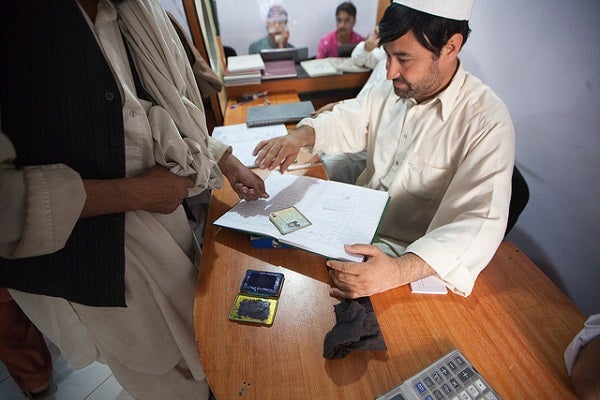Supervisor’s Experience with Expanding Agent Networks: 4 Insights
Agent networks worldwide have drastically changed in nature and scope in recent years. These networks are creating tremendous opportunity by bringing financial choice and convenience to poor customers, including the ability to facilitate digital, cutting-edge savings, credit and insurance products.
Globally, agent networks are seeing astonishing growth, with at least six countries having more than 100,000 agents. Brazil has the highest number of agents, with 377,300 as of January 2015. At the same time, new CGAP research shows that a shift is underway. Latin America and Asia, regions typically served by bank agents, are seeing non-bank agents becoming more common. The reverse is true in Africa, with bank agents expanding where non-bank, mobile money agents used to be the norm. CGAP has also observed a growing diversity of actors in the agent value chain, including new types of agent aggregators and agent network managers. And in countries such as Pakistan and Tanzania, heavy competition in the market is leading to significant increases in the number of shared agents, in which one agent services the transactional needs of multiple financial service providers.

These changes in the market are impressive, exciting, and could go a long way towards advancing and deepening financial inclusion among the poor. However, CGAP was keen to understand how these changes impact risk and the potential implications for financial supervision. It was a new area to explore and we wanted to begin crafting and structuring a global evidence base of current supervisory approaches and tools to supervise banks and non-banks operating through agents. We therefore interviewed supervisory authorities, providers and sector experts in nine leading markets - Mexico, Colombia, Peru, Brazil, Uganda, Kenya, Tanzania, Pakistan and the Philippines – which all have well-established, large and diverse agent networks – in order to identify potential good practices in agent supervision.
Here’s what we found:
Most supervisors in the countries we observed group agent risks under consumer, operational and money laundering/terrorist financing risk.
Consumer risk appears to be one of two key concerns of supervisors and is gaining increasing attention. Issues such as fraud, unauthorized fees, lack of receipts, inadequate dispute resolution procedures and insufficient liquidity at agent premises all impact poor consumers. The other key concern is that agents, as a new channel of the financial institution, may introduce new operational risk events, such as IT continuity, contingency planning and the internal controls of the financial institution.. Money laundering and terrorist financing risk was also raised as an issue, but was far more country specific relative to the other risks.
Agent supervision is an underdeveloped area in the majority of researched countries, with a few exceptions.
Nevertheless, a few countries have created comprehensive and detailed supervisory frameworks, encompassing all phases, such as initial authorization, off-site monitoring, on-site inspections of providers and enforcement measures. The approach to supervision varies considerably by country and is highly contextualized to country circumstances. But it appears that some countries with substantial experience in agent supervision, such as Brazil, have adopted an increasingly more “hands off” approach over time.
Separate regulations for banks and non-banks for the use of agents can lead to uneven approaches in supervision.
Because of this, a dual approach exists for example in Tanzania: agents hired by banks are subject to stricter regulation and supervision, while those used by nonbanks are subject to a lighter framework. This not only creates an uneven playing field that could stifle competition between banks and nonbanks, but also a situation where an agent providing services to both a bank and a nonbank is subject to two different frameworks, even if the services (and associated risk levels) it provides on behalf of the bank and the nonbank are similar or the same. In most observed cases, banks and nonbanks operating through agents are supervised by two separate departments within the supervisory authority, employing different procedures.
CGAP’s recent research includes four broad insights, which are applicable to financial supervisors in the countries we researched and potentially beyond:
1. Implement a truly risk-based approach focusing on the quality of the provider’s risk management.
In some countries we researched, supervisors in practice continue to apply a compliance-based system that may not focus on the highest risk areas. Supervisors should optimize their scarce supervisory resources by focusing on issues posing the highest risk to the achievement of the regulatory objectives of inclusion, stability, protection and integrity. Materiality tests should be used to consider the risk of the agent business to the system as a whole and to individual institutions
2. Build sufficient capacity and qualification of supervisory staff.
There is still room to build on existing supervisory know-how and better optimize scarce supervisory resources. For example, in some countries, attracting and retaining specialized IT expertise is challenging, yet agent supervision manuals do not exist and no specific training on agent supervision has been conducted. Providing these resources could allow generalists to be similarly effective in certain aspects of supervisory work.
3. Only collect data that is relevant.
Data reporting requirements on the agent business varies significantly across the nine supervisory authorities. It is important that supervisors only seek information they have capacity to use and analyze, and to check on its reliability. This data should not only look at agents specifically, but also consider the effect of the agent business on providers (for example, the share of the business conducted through agents rather than branches).
4. Create a level playing field in supervising bank and nonbank agents.
General rules should be issued that are applicable to both bank and non-bank agents. The risks evaluated should depend upon the type of products offered, not on who is providing them. While banking agents can potentially facilitate a wider range of products and this should be considered when supervising their principals, in practice they often primarily offer the same basic cash-in and cash-out services as non-bank agents. Therefore their risk levels may also be similar. Similar requirements for banks and nonbanks—even if regulations are separate— therefore makes sense. Researched countries should continue to harmonize relevant regulatory requirements and supervisory approaches. This might mean that if separate departments are in charge of banks and non-banks operating agents, closer internal coordination and streamlining of financial supervision procedures than currently the case in some researched countries may be both necessary and beneficial.




Add new comment